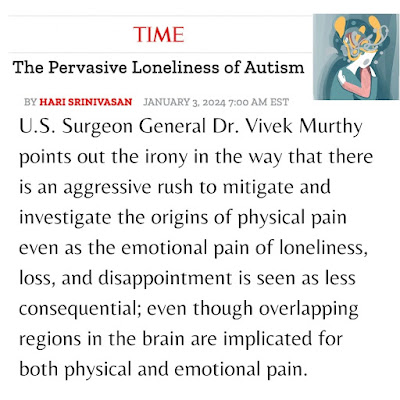"No otherwise qualified individual with a disability in the United States... shall, solely by reason of her or his disability, be excluded from the participation in, be denied the benefits of, or be subjected to discrimination under any program or activity receiving Federal financial assistance."This one line powerful statement is the heart of Section 504 of the Rehabilitation Act of 1973, a landmark piece of legislation that laid the foundation for disability rights in the United States. It was a groundbreaking step towards ensuring equal opportunities for individuals with disabilities in various aspects of public life.
The journey to its enactment and enforcement is a compelling narrative of relentless activism, dramatic protests, and the unwavering determination of a community fighting for their rights.
The Birth of Section 504
In 1973, the first federal civil rights protection for people with disabilities, Section 504 of the Rehabilitation Act, was signed into law. Section 504 specifically prohibits discrimination against persons with disabilities by any program or activity receiving federal financial assistance. This law was based on the language of previous civil rights laws that protected women and minorities, recognizing that society had historically treated people with disabilities as second-class citizens based on deeply held fears and stereotypes. These attitudes had translated into pity and persecution and later into policies that were based on paternalism.
Activism and the 504 Sit-in
Despite its promise, the implementation of Section 504 faced significant delays and resistance. Between 1973 and 1977, no regulations were issued to enforce it. During this period, strong regulations were drafted by attorneys in the Office for Civil Rights and sent to the Secretary of Health, Education, and Welfare (HEW) with a recommendation to publish them for public comment. However, opposition from covered entities such as hospitals, universities, and state and county governments led to much delay. The disability community filed a lawsuit in federal court, and the judge ruled that the regulations must be issued but did not specify when.
In response to these delays, the disability community mobilized. One of the most significant actions was the 504 Sit-in at the San Francisco Federal Building in 1977, led by activists like Judy Heumann and Kitty Cone. This sit-in, which lasted 26 days, was the longest nonviolent occupation of a federal building in U.S. history. Kitty Cone, in her "Short History of the 504 Sit-in" on the Disability Rights Education and Defense Fund (DREDF) website, recounts the strategic planning and broad community support that sustained the protest.
Cone writes, "In the Bay Area, a broad cross-disability coalition, the Emergency 504 Coalition, began building for a rally on April 5th, knowing we’d sit in afterwards. We set up committees to take on different tasks such as rally speakers, media, fund-raising, medics, monitors, publicity, and outreach." The outreach committee's success in garnering broad community support from churches, unions, civil rights organizations, and others proved invaluable once inside the building. The Black Panther Party and Glide Memorial Church provided food, and the International Association of Machinists facilitated the transport of demonstrators to Washington."
The sit-in participants endured physically grueling conditions, sleeping on the floor and dealing with stress about their families, jobs, and health. Cone describes how all participants met daily to make tactical decisions in flowing, creative meetings that often went on for hours. This process was critical for developing consensus and a course of action.
Joseph Califano and the Regulations
The central figure of resistance within the government was Joseph Califano, the Secretary of HEW. Califano was reluctant to sign off on the regulations necessary to enforce Section 504. The activists' persistence, however, eventually bore fruit. Public pressure mounted, and the media attention garnered by the protests made it impossible to ignore their cause. On April 28, 1977, Califano finally signed the regulations, making Section 504 enforceable and marking a monumental victory for disability rights.
Impact of Section 504
Section 504 has had a profound impact on the lives of individuals with disabilities and on American society as a whole. Key outcomes include:
- Educational Opportunities: Section 504 has ensured that students with disabilities have access to educational opportunities and accommodations, leading to more inclusive schools and universities.
- Accessibility: The law has prompted public and private entities that receive federal funding to make their programs and facilities accessible to individuals with disabilities.
- Foundation for Future Legislation: Section 504 set the stage for subsequent disability rights laws, including the Americans with Disabilities Act (ADA), by establishing the principle that discrimination based on disability is illegal.







.jpg)























